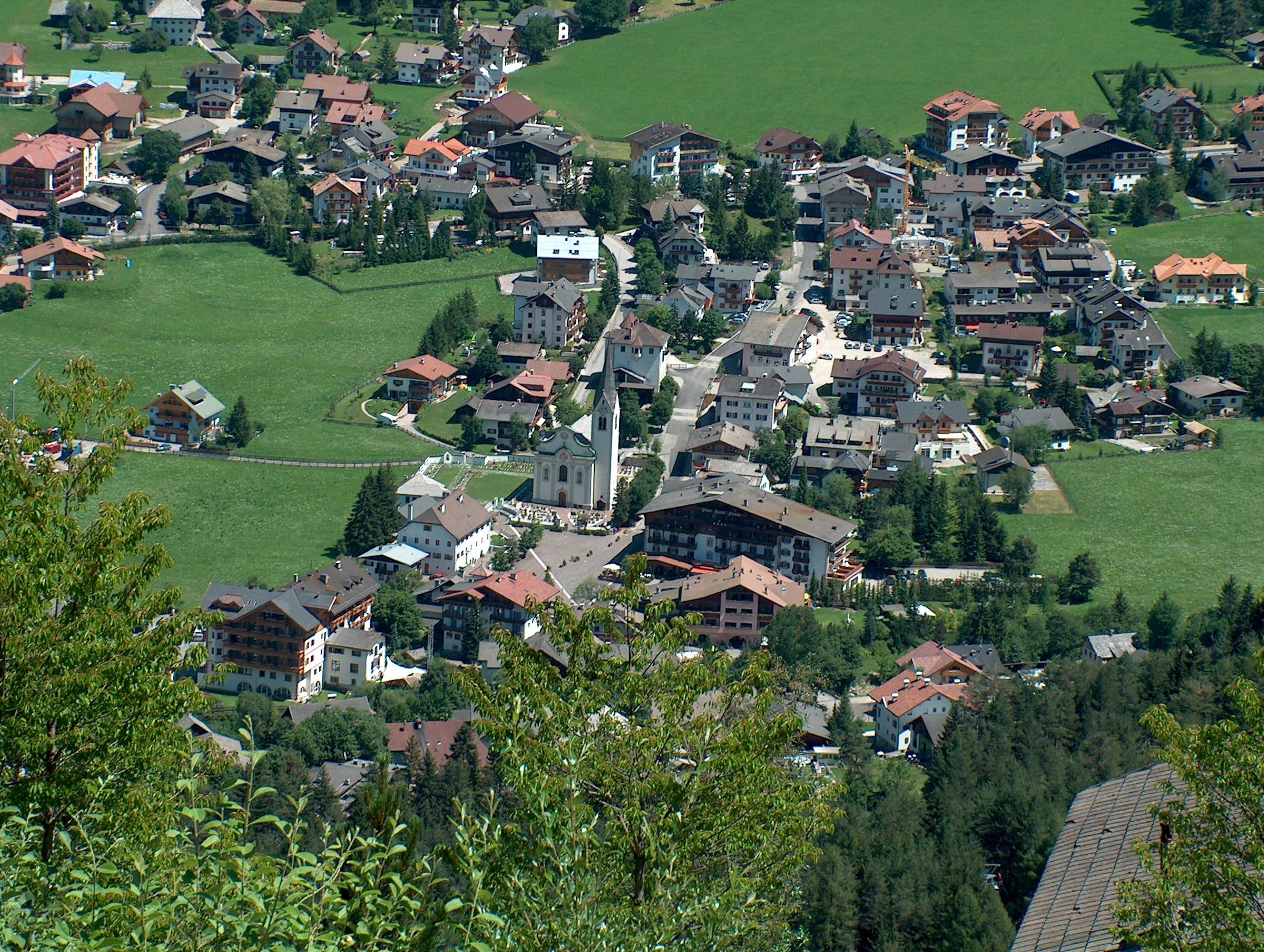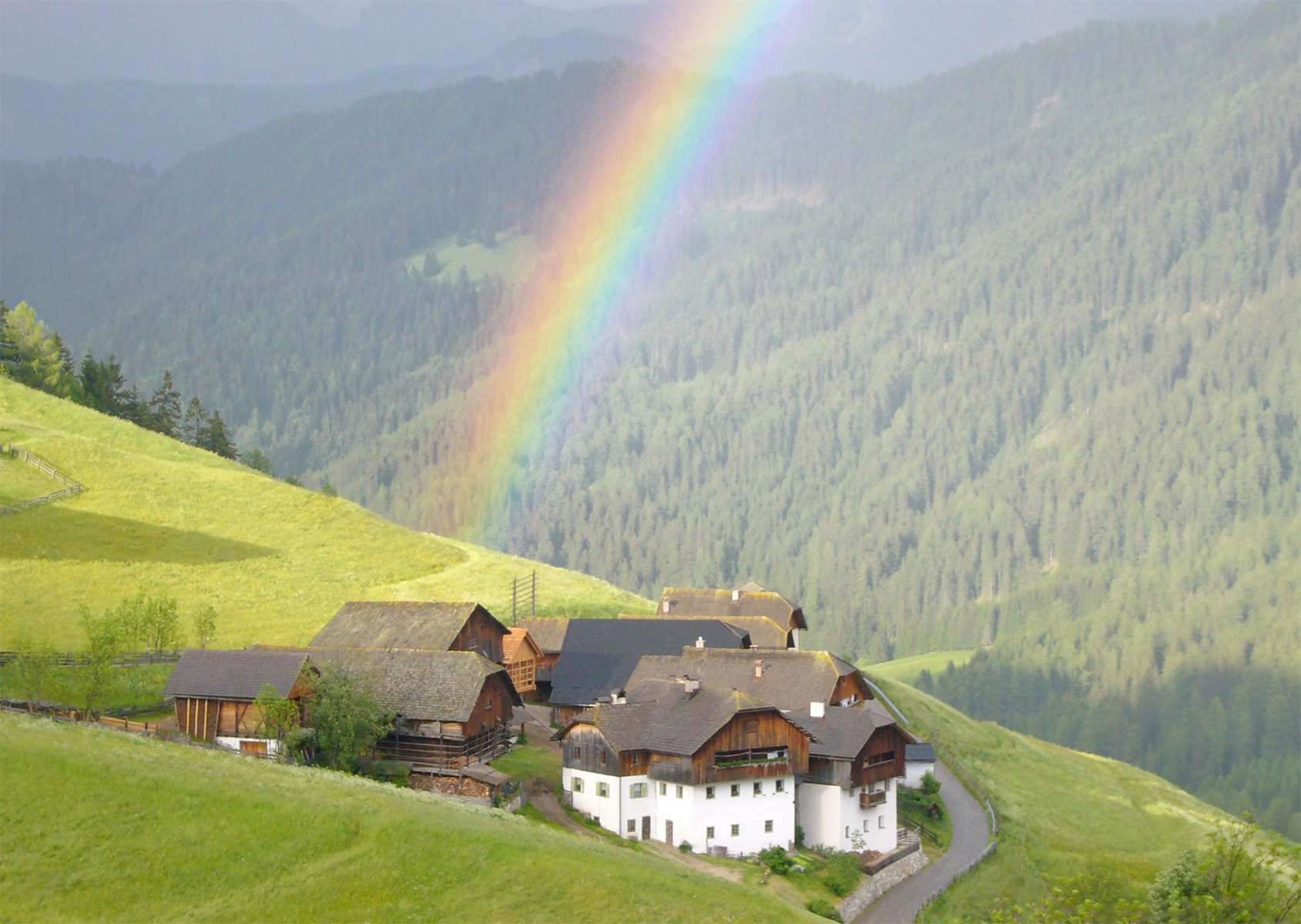|
Mareo
Mareo ( it, Marebbe ; german: Enneberg ) is a ''comune'' (municipality) in South Tyrol in northern Italy, located about northeast of Bolzano. Geography As of 30 November 2010, it had a population of 2,911 and an area of .All demographics and other statistics: Italian statistical institute Istat. Mareo borders the following municipalities: Badia, Prags, Bruneck, Cortina d'Ampezzo, La Val, Lüsen, St. Lorenzen, San Martin de Tor and Olang. Frazioni The municipality of Mareo contains the ''frazioni'' (subdivisions, mainly villages and hamlets) Curt (Corte/Hof), Mantena, La Pli de Mareo, Pliscia (Plisa/Plaiken), Al Plan (San Vigilio/St. Vigil), Rina (Welschellen), and Longega (Zwischenwasser). History Coat of arms The shield is parted quarterly: the first part represents the Tyrolean Eagle on argent; the second the insignia of Austria. The third shows the head's dog of argent, with an or collar on gules, which represents the arms of the Lords of ''Ros'' that in thirteenth cen ... [...More Info...] [...Related Items...] OR: [Wikipedia] [Google] [Baidu] |
Ladin Language
Ladin (, also ; autonym: , it, ladino; german: Ladinisch) is a Romance language of the Rhaeto-Romance subgroup, mainly spoken in the Dolomite Mountains in Northern Italy in the provinces of South Tyrol, Trentino, and Belluno, by the Ladin people. It exhibits similarities to Swiss Romansh and Friulian. The precise extension of the Ladin language area is a subject of scholarly debate. A more narrow perspective includes only the dialects of the valleys around the Sella group, while wider definitions comprise the dialects of adjacent valleys in the Province of Belluno and even dialects spoken in the northwestern Trentino. A standard variety of Ladin () has been developed by the Office for Ladin Language Planning as a common communication tool across the whole Ladin-speaking region. Geographic distribution Ladin is recognized as a minority language in 54 Italian municipalities belonging to the provinces of South Tyrol, Trentino and Belluno. It is not possible to asses ... [...More Info...] [...Related Items...] OR: [Wikipedia] [Google] [Baidu] |
Prags
Prags (; it, Braies ; Ladin: ''Braies'') is a ''comune'' (municipality) in South Tyrol in northern Italy, located about northeast of Bolzano. Geography As of 30 November 2010, it had a population of 657 and an area of .All demographics and other statistics: Italian statistical institute Istat. Prags is located in the Prags valley in the northern Dolomites. The valley is split into two branches, the western one ending at the Pragser Wildsee, a mountain lake, the eastern one at the Plätzwiese, an extended alpine pasture. Prags borders the following municipalities: Cortina d'Ampezzo, Toblach, Mareo, Welsberg-Taisten, Olang, and Niederdorf. Frazioni The municipality of Prags contains the ''frazioni'' (subdivisions, mainly villages and hamlets) Außerprags (Braies di Fuori), Innerprags (Braies di Dentro), Schmieden (Ferrara) and St. Veit (San Vito). History Coat-of-arms The emblem represents a stag on a mountain with three vert peaks, crossed by a wavy stream of argent. The ... [...More Info...] [...Related Items...] OR: [Wikipedia] [Google] [Baidu] |
Olang
Olang (; it, Valdaora ) is a ''comune'' (municipality) in South Tyrol in northern Italy, located about northeast of the city of Bolzano. Geography As of 31 December 2015, it had a population of 3,132 and an area of .All demographics and other statistics: Italian statistical institute National Institute of Statistics (Italy), Istat. Olang borders the following municipalities: Bruneck, Mareo, Prags, Rasen-Antholz, and Welsberg-Taisten. Frazioni The municipality of Olang contains the ''frazione, frazioni'' (subdivisions, mainly villages and hamlets) Geiselsberg (Sorafurcia), Mitterolang (Valdaora di Mezzo), Niederolang (Valdaora di Sotto) and Oberolang (Valdaora di Sopra). History Coat-of-arms The emblem is argent a bend (heraldry), bend Vert (heraldry), vert on which are represented three cart’s wheels. The wheels symbolize the villages of Mitterolang, Oberolang and Niederolang and their disposition in the valley. The emblem was granted in 1968. Society Linguistic distribu ... [...More Info...] [...Related Items...] OR: [Wikipedia] [Google] [Baidu] |
South Tyrol
it, Provincia Autonoma di Bolzano – Alto Adige lld, Provinzia Autonoma de Balsan/Bulsan – Südtirol , settlement_type = Autonomous province , image_skyline = , image_alt = , image_caption = , image_flag = Flag_of_South_Tyrol.svg , flag_alt = , image_shield = Suedtirol CoA.svg , shield_size = x100px , shield_alt = Coat of arms of Tyrol , anthem = , image_map = Bolzano in Italy.svg , map_alt = , map_caption = Map highlighting the location of the province of South Tyrol in Italy (in red) , coordinates = , coordinates_footnotes = , subdivision_type = Country , subdivision_name = Italy , subdivision_type1 = R ... [...More Info...] [...Related Items...] OR: [Wikipedia] [Google] [Baidu] |
Lüsen
Lüsen (; it, Luson ) is a ''comune'' (municipality) in South Tyrol, located about northeast of the city of Bolzano. Geography As of 30 November 2010, it had a population of 1,543 and an area of .All demographics and other statistics: Italian statistical institute Istat. Lüsen (Luson) borders the following municipalities: Brixen, Mareo, Natz-Schabs, Rodeneck, St. Lorenzen, and San Martin de Tor. Frazioni The municipality of Lüsen (Luson) contains the ''frazioni'' (subdivisions, mainly villages and hamlets) Berg (Monte), Petschied (Pezzè), Rungg (Ronco) and Flitt (Valletta). History Coat-of-arms The emblem represents a knight in armor, with plumes, lance in rest on a horse facing left, both of argent on gules. The emblem, adopted in 1967, resumes an arms used by the administration of the Bishops of ''Brixen'' since 1607. Society Linguistic distribution According to the 2011 census, 97.77% of the population speak German, 1.39% Italian and 0.83% Ladin Ladin may refer to: ... [...More Info...] [...Related Items...] OR: [Wikipedia] [Google] [Baidu] |
La Val
La Val ( it, La Valle ; german: Wengen ) is a ''comune'' (municipality) in the province of South Tyrol in northern Italy, located about northeast of the city of Bolzano. Geography As of 30 November 2010, it had a population of 1,307 and an area of .All demographics and other statistics: Italian statistical institute National Institute of Statistics (Italy), Istat. History Coat-of-arms The emblem consists of a Vert (heraldry), vert branch, placed on division of the field, bend, with two leaves on argent, it is the emblem of the family ''Rü''. The emblem was adopted in 1969. Society Linguistic distribution According to the 2011 census, 97.66% of the population speak Ladin language, Ladin, 1.53% Italian and 0.81% German as first language. Demographic evolution Colors= id:lightgrey value:gray(0.9) id:darkgrey value:gray(0.8) id:sfondo value:rgb(1,1,1) id:barra value:rgb(0.6,0.7,0.8) ImageSize = width:455 height:303 PlotArea = left:50 bottom:50 top:30 right:30 DateFormat = x ... [...More Info...] [...Related Items...] OR: [Wikipedia] [Google] [Baidu] |
San Martin De Tor
San Martin de Tor ( it, San Martino in Badia ; german: St. Martin in Thurn ) is a ''comune'' (municipality) in South Tyrol in northern Italy, located about northeast of the city of Bolzano. Geography As of 30 November 2010, it had a population of 1,726 and an area of .All demographics and other statistics: Italian statistical institute Istat. San Martin is home to the Istitut Ladin Micurà de Rü, which is tasked with preserving and promoting the Ladin culture and language. San Martin borders the following municipalities: Badia, Brixen, Corvara, La Val, Lüsen, Mareo, Santa Cristina Gherdëina, Sëlva and Villnöß. Frazioni The municipality of San Martin contains the ''frazioni'' (subdivisions, mainly villages and hamlets) of Antermëia (Antermoia/Untermoi), Lungiarü (Longiarù/Campill), and Picolin (Piccolino/Pikolein). History Coat-of-arms The shield is party per cross: the first quarter represents an argent tower with azure roof on sable; the second one is an arg ... [...More Info...] [...Related Items...] OR: [Wikipedia] [Google] [Baidu] |
Badia, South Tyrol
Badia (; german: Abtei ) is a ''comune'' (municipality) in South Tyrol, northern Italy. It is one of the five Ladin-speaking communities of the Val Badia which is part of the Ladinia region. Geography The municipal area stretches on the Gran Ega river in the southern, upper part of the Val Badia (''Abteital''). It is surrounded by the steep limestone peaks of the scenic Dolomites mountain range. Part of the comune lies in Alta Badia, a ski resort at the top end of the Val Badia valley. Badia is accessible by road from La Val (''Wengen'') in the north, located about half-way down to the Puster Valley at Bruneck. In the south, the valley road leads up to three mountain passes: Valparola Pass, connecting Badia with Cortina d’Ampezzo, Campolongo Pass linking the neighbouring comune of Corvara with the Arabba ski resort, and Gardena Pass leading to Val Gardena (''Gröden''). All pass roads may be temporarily closed during harsh winter conditions. Neighbouring municipalities The ... [...More Info...] [...Related Items...] OR: [Wikipedia] [Google] [Baidu] |
Eagle (heraldry)
The eagle is used in heraldry as a charge, as a supporter, and as a crest. Heraldic eagles can be found throughout world history like in the Achaemenid Empire or in the present Republic of Indonesia. The European post-classical symbolism of the heraldic eagle is connected with the Roman Empire on one hand (especially in the case of the double-headed eagle), and with Saint John the Evangelist on the other. History A golden eagle was often used on the banner of the Achaemenid Empire of Persia. Eagle (or the related royal bird ''vareghna'') symbolized ''khvarenah'' (the God-given glory), and the Achaemenid family was associated with eagle (according to legend, Achaemenes was raised by an eagle). The local rulers of Persis in the Seleucid and Parthian eras (3rd-2nd centuries BC) sometimes used an eagle as the finial of their banner. Parthians and Armenians used eagle banners, too. European heraldry In Europe the iconography of the heraldic eagle, as with other heral ... [...More Info...] [...Related Items...] OR: [Wikipedia] [Google] [Baidu] |
Tyrol (state)
Tyrol (; german: Tirol ; it, Tirolo) is a States of Austria, state (''Land'') in western Austria. It comprises the Austrian part of the historical County of Tyrol, Princely County of Tyrol. It is a constituent part of the present-day Euroregion Tyrol–South Tyrol–Trentino (together with South Tyrol and Trentino in Italy). The capital of Tyrol is Innsbruck. Geography The state of Tyrol is separated into two parts, divided by a strip. The larger territory is called North Tyrol (''Nordtirol'') and the smaller area is called East Tyrol (''Osttirol''). The neighbouring Austrian state of Salzburg (state), Salzburg stands to the east, while on the south Tyrol has a border with the Italy, Italian province of South Tyrol (Trentino-Alto Adige/Südtirol) which was part of the Austro-Hungarian Empire before the First World War. With a land area of , Tyrol is the third-largest state in Austria. Tyrol shares its borders with the federal state of Salzburg in the east and Vorarlberg in th ... [...More Info...] [...Related Items...] OR: [Wikipedia] [Google] [Baidu] |
Sable (heraldry)
In heraldry, sable () is the tincture black Black is a color which results from the absence or complete absorption of visible light. It is an achromatic color, without hue, like white and grey. It is often used symbolically or figuratively to represent darkness. Black and white ..., and belongs to the class of dark tinctures, called "colours". In engravings and line drawings, it is sometimes depicted as a region of crossed horizontal and vertical lines, or else marked with ''sa.'' as an abbreviation. The name derives from the black fur of the sable, a species of marten. Poetic meanings Centuries ago, arms were often described poetically and the tinctures were connected to different gemstones, flowers and heavenly bodies. Sable usually represented the following: * Of jewels, the diamond * Of heavenly bodies, Saturn * Of flowers, the herb nightshade, in these circumstances also called dwal Gallery File:Arms of Dalzell, Earl of Carnwath.svg, Arms of Dalziel family o ... [...More Info...] [...Related Items...] OR: [Wikipedia] [Google] [Baidu] |





